When New York Rangers management released what’s commonly referred to now as The Letter in February 2018, it represented more than a formal notification to the fan base that the team was going to undertake what was expected to be an arduous rebuilding process.
That letter encouragingly indicated a sense of organizational self-awareness, that three deep runs at the Stanley Cup over a four-season span was as far as that core group was going to go. That to continue to try to finish the job after those Rangers’ window had effectively closed would be more than folly – it would be detrimental to the long-term health of the club’s ability to compete.
Five years later, it’s time for another full dose of that self-awareness.
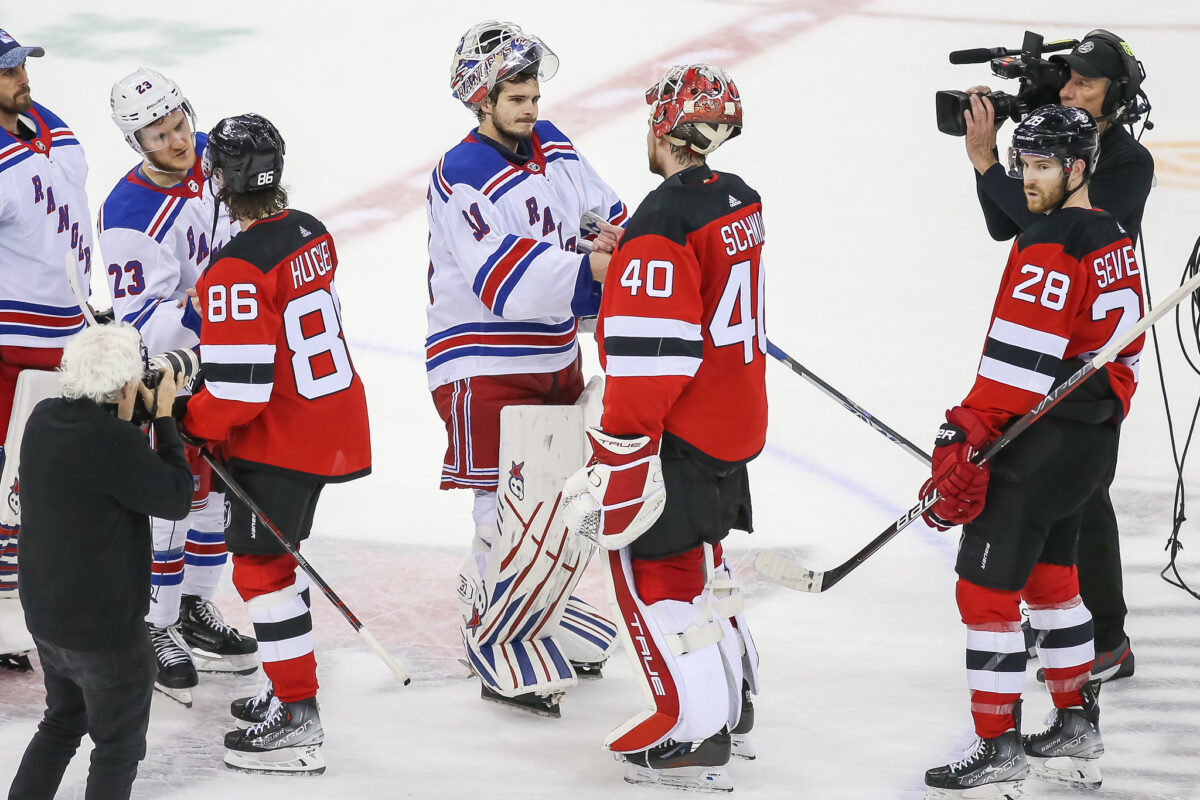
No, the Blueshirts aren’t going to engage in another full-scale teardown after their devastating seven-game loss to the New Jersey Devils in the first round of the NHL Playoffs – that wouldn’t be possible anyway, given the long-term contracts on the roster. What the front office needs to see are the similarities between 2023 and 2018: While the personnel is better now than it was then, the current approach has taken the team as far as it can; a path that’s bound to keep ending before a trip down the Canyon of Heroes.
It just doesn’t appear likely at this point, despite two consecutive 100-plus point seasons, that the Rangers are going to be able to ride veteran stars Artemi Panarin, Chris Kreider, Mika Zibanejad, Vincent Trocheck and whatever trade-deadline rentals they bring in that year to a championship. A change in philosophy – or more specifically, a return to the philosophy that was embraced in 2018 – is sorely needed.
Turning Over the Roster Isn’t an Option This Time
This course correction wouldn’t mean a purging of veterans. Instead, it should mean resuming the process that was prematurely abandoned: The patient development of the high-end youth the team spent more than three years acquiring, while augmenting those players with more prospects who, frankly, might give the organization a better chance to win a Stanley Cup than the present configuration does.
The no-show performance by the club’s stars in these playoffs cannot be ignored. Panarin managed two assists and no goals against the Devils, his most noticeable moment in the 4-0 loss in Game 7 on May 1 being an inexcusable drop pass that led to a Jack Hughes breakaway. It was Panarin’s second straight sub-par playoff performance, giving added life to the idea that his game, so dominant and productive during the regular season, doesn’t translate to the playoffs.
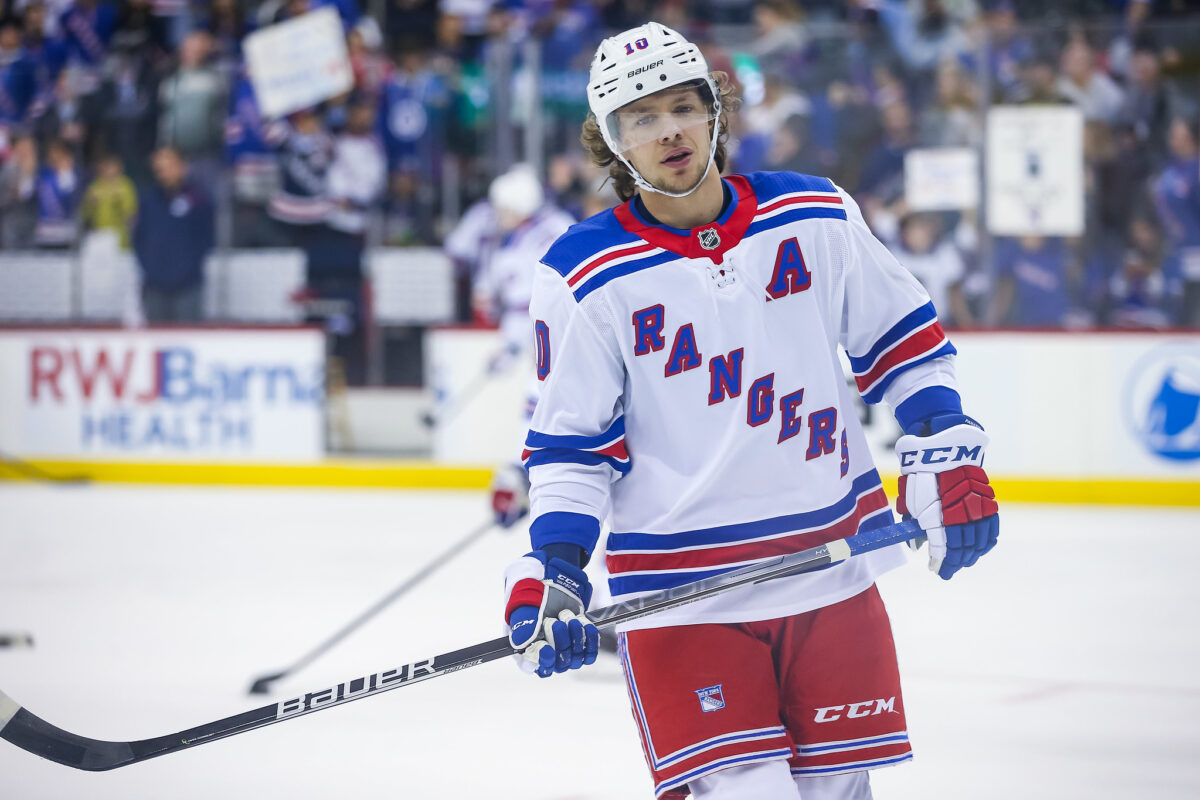
Zibanejad had one goal and three assists. Splashy trade acquisitions Vladimir Tarasenko and Patrick Kane were mostly invisible in big moments. Kreider, despite his six-goal, three-assist series, was terrible in the decisive contest, going scoreless and being on the ice for all four Devils goals.
This is not to say the kids were any good, either. Alexis Lafreniere, Kaapo Kakko and Filip Chytil, so consequential with their energy and big goals in last season’s run to the Eastern Conference Final, totaled two goals and four assists in this postseason. Adam Fox, the 2021 Norris Trophy winner, looked increasingly worn down as the series went on and seemed to be exposed for his lack of quickness with the puck when pressed consistently. Fellow young defensemen K’Andre Miller and Ryan Lindgren failed to put their stamp on the series.
Ultimately, the Rangers, known for playing a fast, highly-skilled, puck-possession game, looked a step slow and sometimes tired against the younger, faster, more dynamic Devils after grabbing a 2-0 series lead on the road. Assuming that the same group, occupying the same roles next season – when the veterans will be a year older – will deliver vastly better results in the postseason would reek of denial.
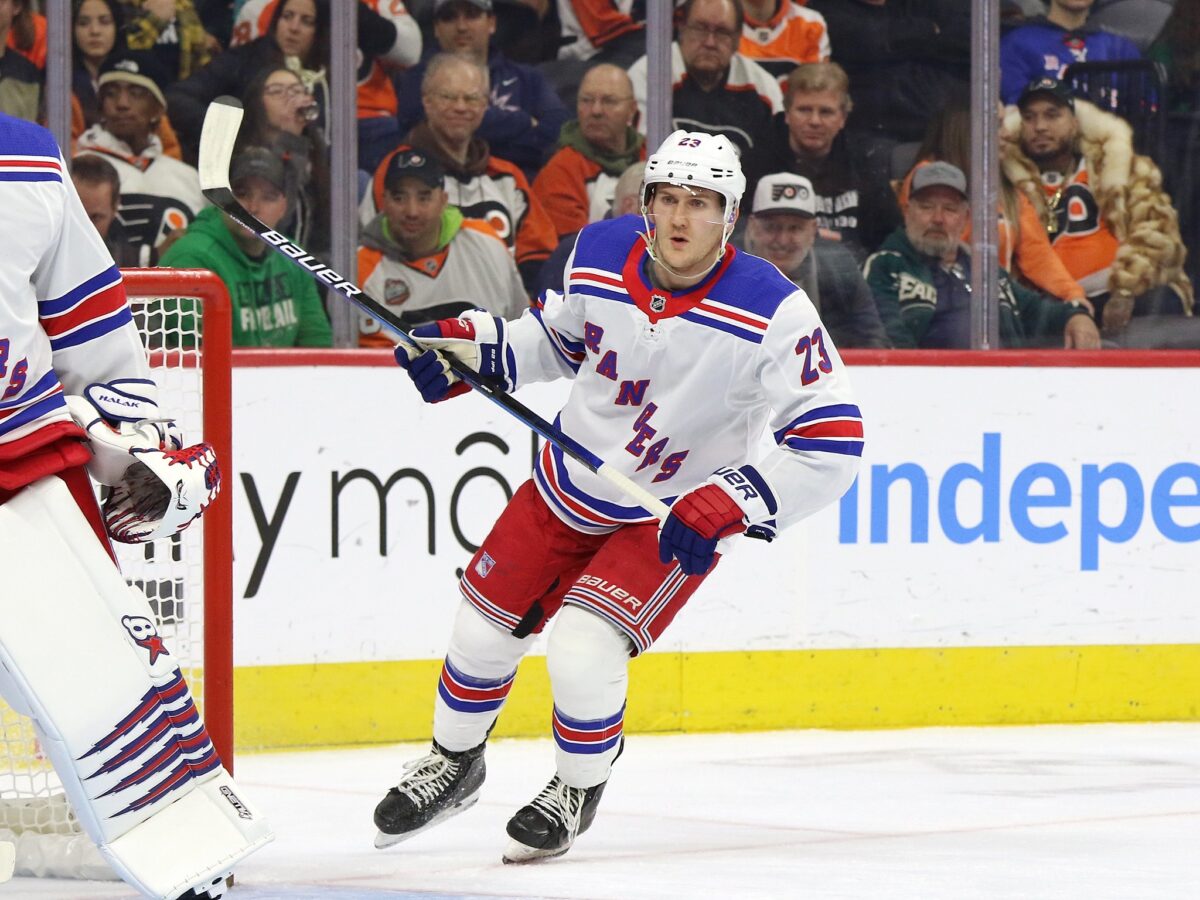
The best course of action would be for the organization to first admit that last year’s run to within two games of the Stanley Cup Final caused the front office to believe that perennial championship contention was back, that the rebuild had ended – and that this sentiment was incorrect. Fully admitting to that error would allow general manager Chris Drury to begin revamping the club’s roster and outlook this offseason in the following ways:
No More Kid Line – It’s Prime Time for the Young Forwards
Despite their less-than inspiring performances against New Jersey, it’s way past time for the Rangers to run with first overall draft pick Lafreniere, second overall selection Kakko and 21st overall pick Chytil in the top six. If coach Gerard Gallant (or whoever happens to be behind the bench next season) wants to keep them as a unit, fine, but the Kid Line needs to be the first or second line – not the third line any longer. The Blueshirts have to finally find out whether they have a trio of franchise forward cornerstones, or whether any of them should be moved out while they still have value.
Kakko’s 18 goals, 22 assists this season were career highs, as were Chytil’s 22 goals and 23 assists. Lafreniere’s 39 points were a career best. Kakko is signed through next season on a bridge contract, Chytil just re-upped for four more years and Lafreniere is expected to be bridged this summer after the expiration of his entry-level contract.
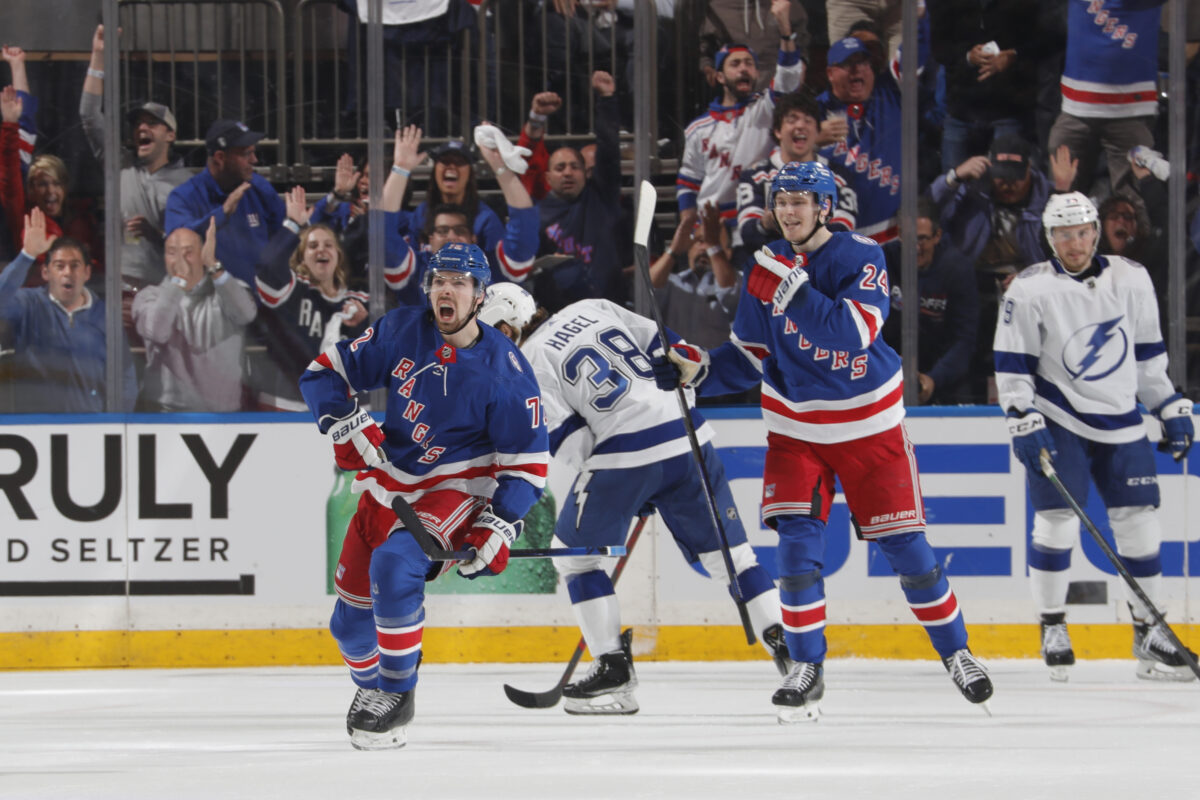
All three 20-somethings have flashed elite skills. All three rarely get time on the power play or top-six minutes. Enough is enough. Lafreniere should play left wing in the top six ahead of Kreider, Chytil needs to be the second-line center behind Zibanejad and Kakko should be the top-line right wing in 2023-24. All three players should get consistent minutes with the man advantage – ahead of the veteran-heavy and increasingly predictable current power-play lineup – and all three must be allowed to work through mistakes and slumps as the Rangers attempt to complete their rebuild, just as the Devils did in properly developing the kids that just ran the Blueshirts out of the postseason.
That will mean either Kreider or Panarin, who carry a combined annual cap hit of more than $18 million, playing left wing on the third line. So be it. If the Rangers want to win the Cup in the near future, it’s become abundantly clear that those players won’t be the ones to get them there, at least in a lead role.
A reworking of the forward corps with youth should also prioritize adding Will Cuylle and Brennan Othmann to the mix, giving them every opportunity to make the team in the fall. Cuylle, the 6-foot-3, 204-pound cinderblock who brought physicality and toughness to the lineup in a four-game cameo with the Rangers in January and February, looks ready for a shot at the big time at age 21. He recorded 25 goals and 20 assists in 69 games with the Hartford Wolf Pack of the American Hockey League this season, continuing the 2020 second-round pick’s trend of showing significant improvement at every level.
Cuylle is what the Rangers so desperately lacked against the Devils – a player that can bull his way to the net and stay there, while winning tough battles for the puck down low in the offensive zone. There’s no guarantee he’ll be an effective NHLer, but he’s a highly-regarded prospect who needs to get a long look with the big club if the Rangers decide to return to the process of integrating promising youth to the roster.
“Talent doesn’t mean a thing,” Gallant said after Game 7 in what sounded like a veiled critique of the makeup of his team. “It’s great to have talent, but you’ve got to play together and work together. Obviously, the four games that we lost, we had two goals. That’s the bottom line. You’re not going to win if you get two goals in four games.
“I love to have talent, but you love to have work ethic and more forecheck and stuff like that. We just didn’t get it done.” (From ‘There Will Be Consequences For Massive Rangers Disappointment’, New York Post, 5/2/23)
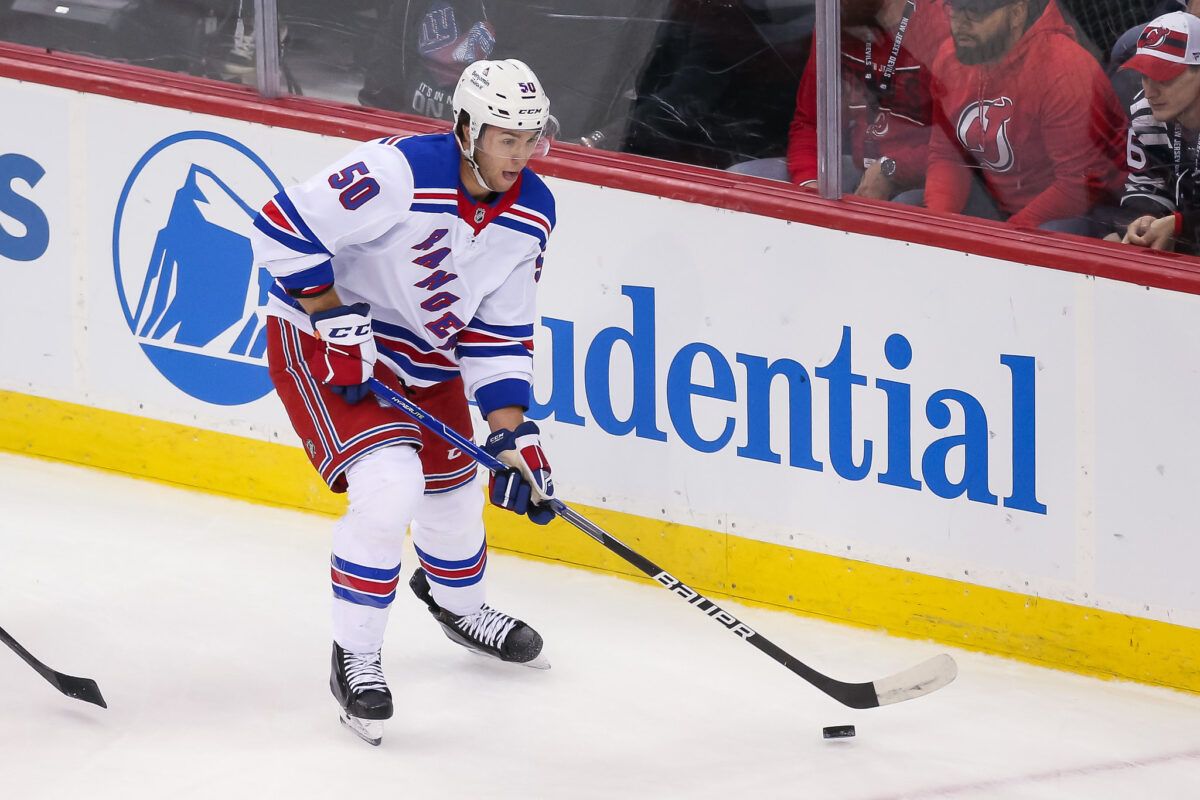
Cuylle would certainly give the Blueshirts more of those elements, as would Othmann, the club’s first-round pick in 2021 who tore up the Ontario Hockey League with 164 points in 122 games over the past three seasons. Othmann plays an edgy, angry game, operating with a clear chip on his shoulder that works in tandem with his promising offensive skills. Like Cuylle, he’s the kind of jagged player – “hard to play against,” in standard hockey jargon – that this Rangers roster sorely needs.
The big question with Othmann would be whether the 20-year-old is able to make the jump from junior hockey directly to the NHL, though numerous star players have done so. If Othmann, whose Jan. 5 birthday caused him to miss the cutoff for eligibility to play in the AHL last season by five days, proves less than ready for the NHL at training camp, the Rangers could assign him to Hartford for a short period of seasoning and bring him up quickly if his play warrants it.
Perhaps Cuylle grabs the left-wing assignment on the fourth line, while the Rangers try to find out whether Othmann – like Cuylle, a natural left wing in an organization overloaded with them – can handle the right side.

There doesn’t seem to be much choice in the matter when it comes to shaking up the forward composition. The current mix of veterans is deficient and has grown stale, with expensive long-term contracts and no-move clauses that all but guarantee a return for each of them. That, however, should no longer be an excuse to block the next generation that might hold the key to taking the team to a championship level.
There’s a Need for Speed on Defense, Zac
The organization has had more success at developing a young group of defensemen than it has the forwards to this point. In Fox, Miller, Lindgren and Braden Schneider, the Rangers believe they have a tough and versatile youthful backline going forward.
Yet as they did with the Rangers up front, the Devils exposed a flaw in that promising group: There’s a lack of quickness in both movement with the puck and with moving it to a teammate fast enough when an opponent puts pressure on the defense. Fox, for all of his marvelous abilities, won’t ever be confused with someone who can skate his way out of trouble. Miller, Lindgren and Schneider are hardly immobile – especially in the case of Miller – but New Jersey was able to create sustained time in the offensive zone by neutralizing their time and space to make outlet passes.
A Cale Makar-type player (no, he’s not available) is needed on the blue line, one who like Makar possesses the elite skating ability to speed the puck up ice and out of trouble if the passing lanes are closed off. The Rangers just happen to have such a player.
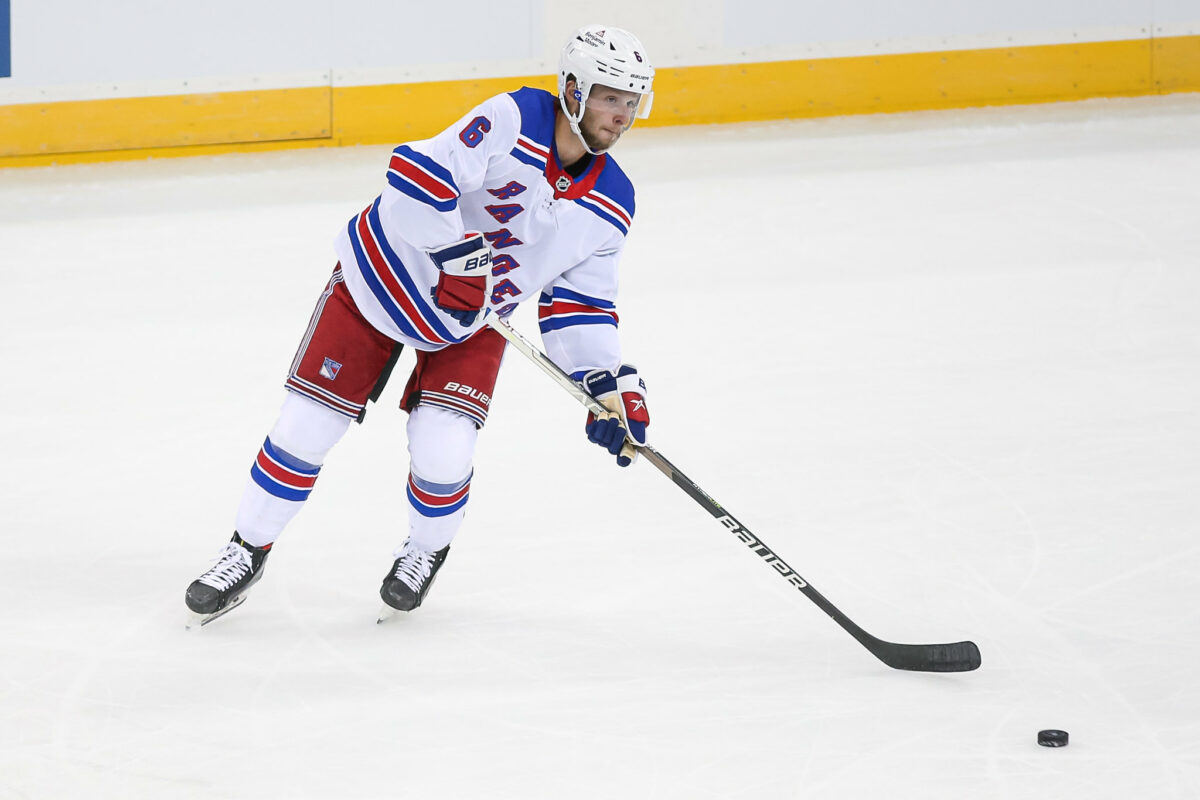
That would be Zac Jones, the smallish yet lightning-quick left-side defender who enjoyed a strong 2022-23 season with the Wolf Pack, recording eight goals, 23 assists and a plus-16 rating in 54 games. The third-round pick in 2019 has played 38 games with the Blueshirts over the past three seasons, totaling one goal, seven assists and a minus-11 rating.
Jones isn’t Makar, the Colorado Avalanche superstar, and he’ll have to answer the question of whether his can be consistently effective in his own zone in the NHL at 5-10 and 178 pounds. Yet Jones’ high-octane skating rivals that of Makar’s, and his outstanding lateral movement atop the offensive zone make him a polished power-play quarterback.
Related: Cuylle’s Debut Reminds Rangers of What They Need to Become
Jones would inject a dose of that desperately-desired quickness into the defense corps. Gallant prefers size on the backline, particularly on the third pair, where Jones would ostensibly play (the left-side spot there appears wide open with the expected departure of Nikko Mikkola as a free agent). It appears clear after the crash out of the postseason, though, that the Rangers need more of a mix. Miller, Lindgren, Schneider and captain Jacob Trouba bring plenty of the physical play, while Jones can push the pace and join Fox in making the Blueshirts’ defense more aggressive moving up ice.
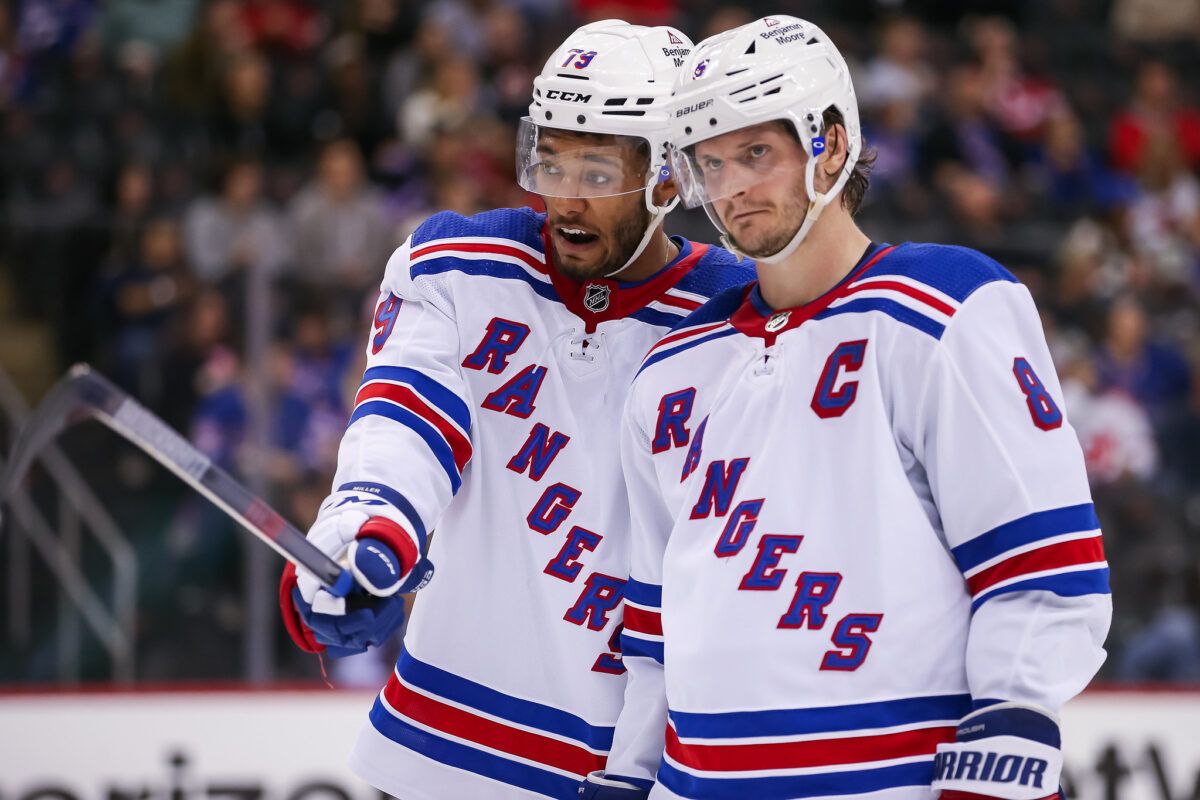
Jones, 22, wasn’t ready for a full-time job last season, when he appeared unsteady and uncertain during a mostly rough 16-game stint to start the season after winning a spot out of camp largely by default. The Rangers, though, remain high on him, especially after a strong developmental year in the AHL. As with the other aforementioned youngsters, it’s time to figure out whether Jones can be part of a better future for this roster.
Rangers Might Want to Send Out Another Letter
Should Drury, who didn’t author The Letter (that was the work of then-general manager Jeff Gorton), write and send out his own now, in the spirit of keeping fans informed about an organizational pivot back to the stated goal of the 2018 correspondence?
That’s tongue-in-cheek, of course. The intent, though, is completely serious: It seems obvious that another inflection point has arrived for this team. The Rangers, needing to re-sign many of the aforementioned kids to new contracts over the next few seasons, don’t have the salary-cap room to bring in expensive reinforcements – and why would they want to, anyway?
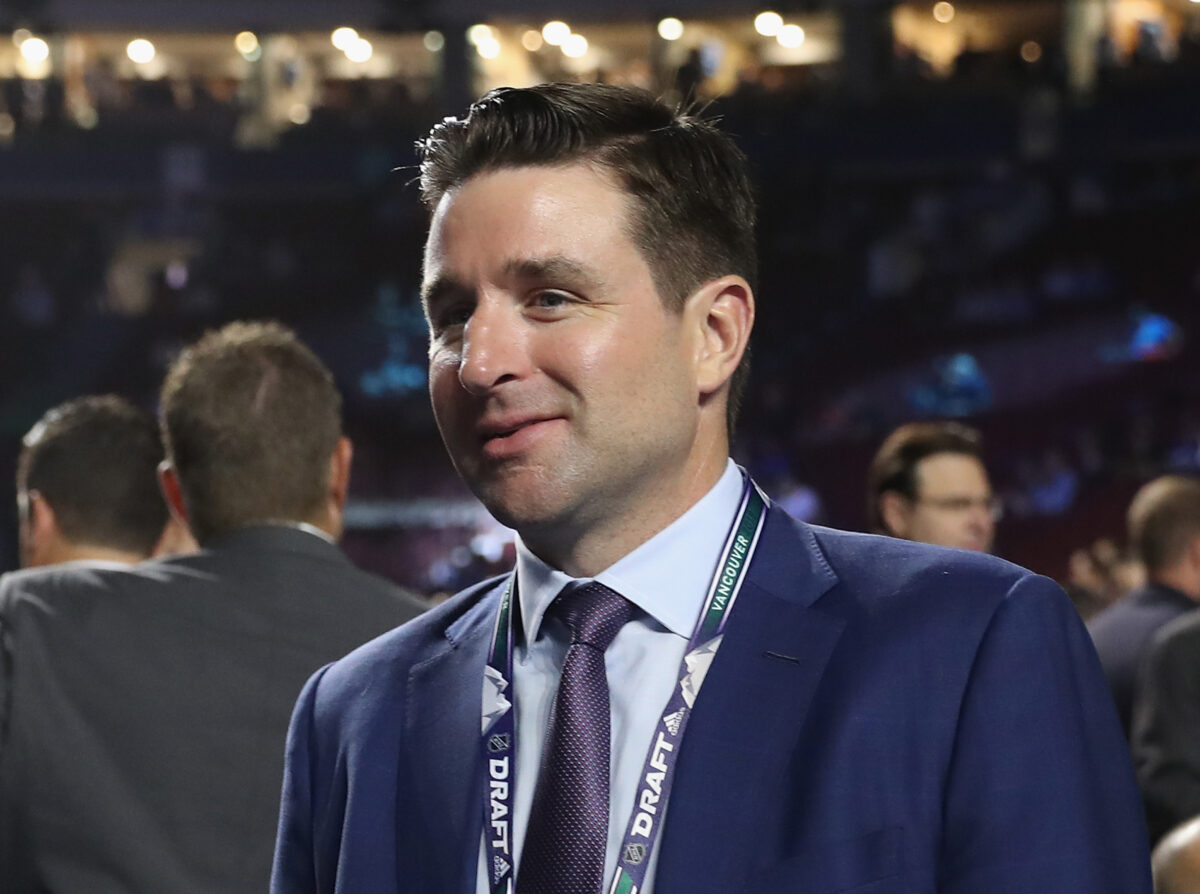
Their high-wattage stars, all in or near their 30s, seem unlikely to deliver a championship as the club’s core. The long-term signings of Panarin, Zibanejad, Kreider, Trocheck, et al have largely paid dividends in the form of excellent production, but that group doesn’t look like the one that will lead the Rangers out of another Stanley Cup drought that has reached 29 years.
The best hopes for ending it may lie with the high-ceilinged youth that the club worked painstakingly to acquire under Gorton and then Drury. It’s time to end the pause and hit Resume on the rebuilding project. The playoff meltdown against the rival Devils couldn’t make that any clearer.